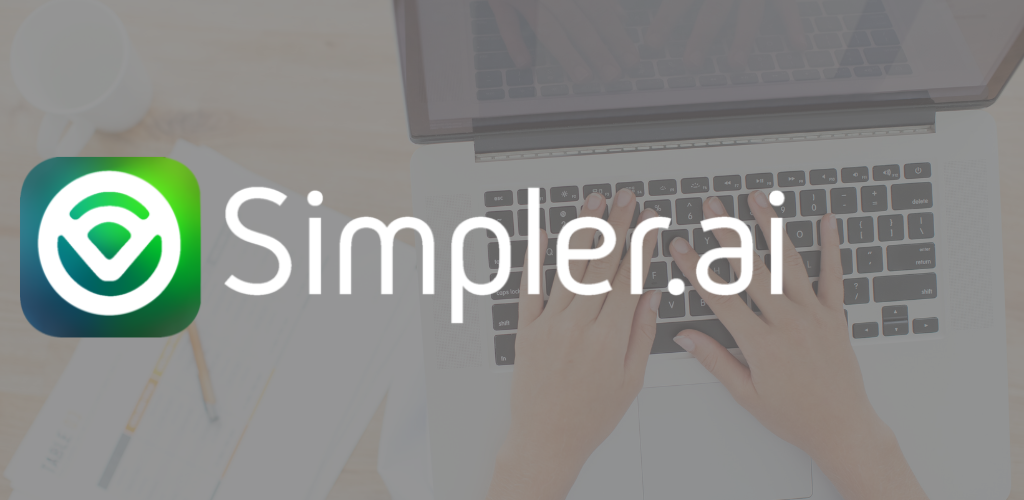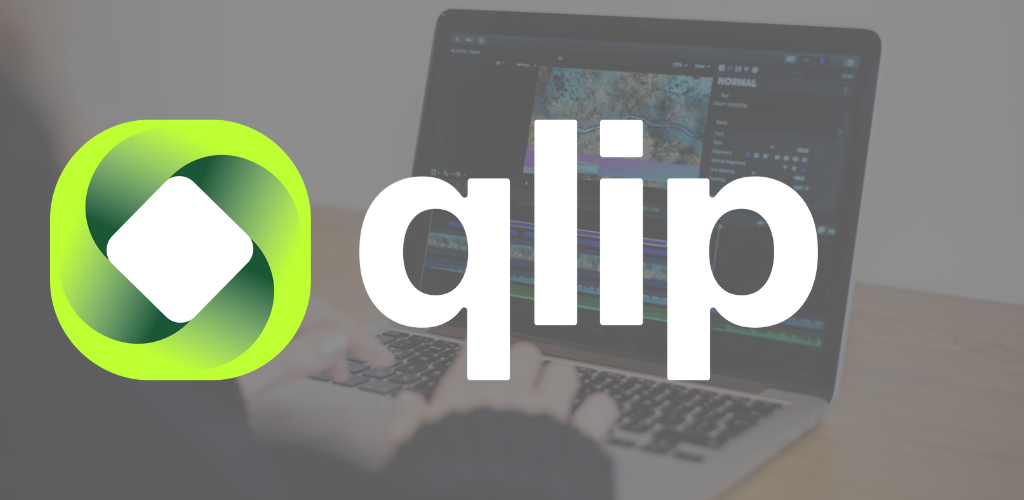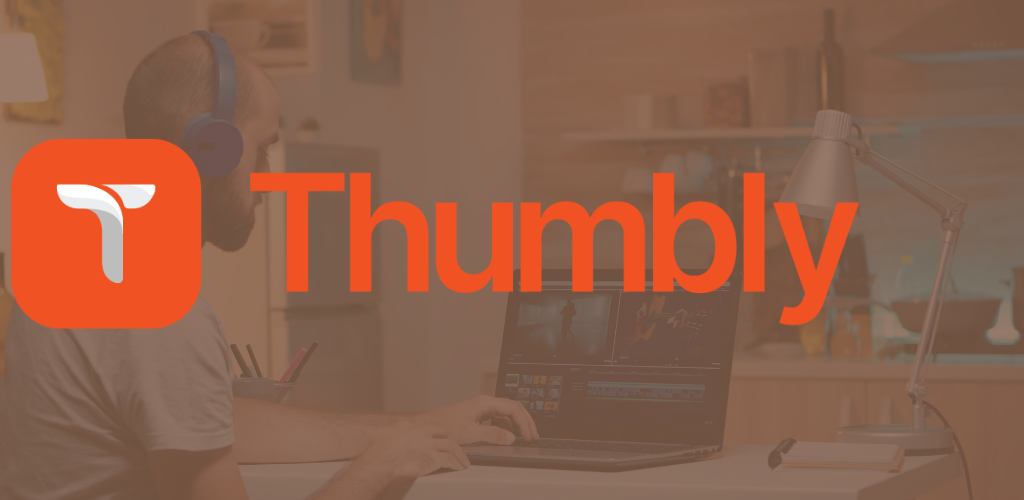Prescription management has been revolutionized by e-prescribing software for healthcare practitioners. No more laborious phone calls to pharmacies or disorganized handwritten notes. Doctors may quickly and accurately submit prescriptions to pharmacies using e-prescribing systems, which ensures speed, convenience, and accuracy for consumers and healthcare providers.
This system improves the medication management process, lowers prescription errors, and improves patient safety. Selecting the finest e-prescribing software is essential for smooth, effective patient care as healthcare increasingly turns to digital alternatives. Let’s examine a few of the best choices that are currently offered!
How E-Prescribing Reduces Prescription Fraud and Abuse
The potential of e-prescribing software to prevent prescription fraud and misuse is one of its most significant advantages. Prescription pads that are stolen, tampered with, or altered without authorization are more likely to occur with traditional paper prescriptions. Through safe, encrypted networks, e-prescribing sends prescriptions directly to the pharmacy, eliminating these risks.
With identification verification and audit trails, it provides an additional degree of security for regulated substances. E-prescribing guarantees that pharmaceuticals are given lawfully and safely while assisting healthcare providers in identifying odd patterns, such as doctor shopping, by collecting and monitoring prescription data in real-time.
10 Best E-Prescribing Software
1. RXNT
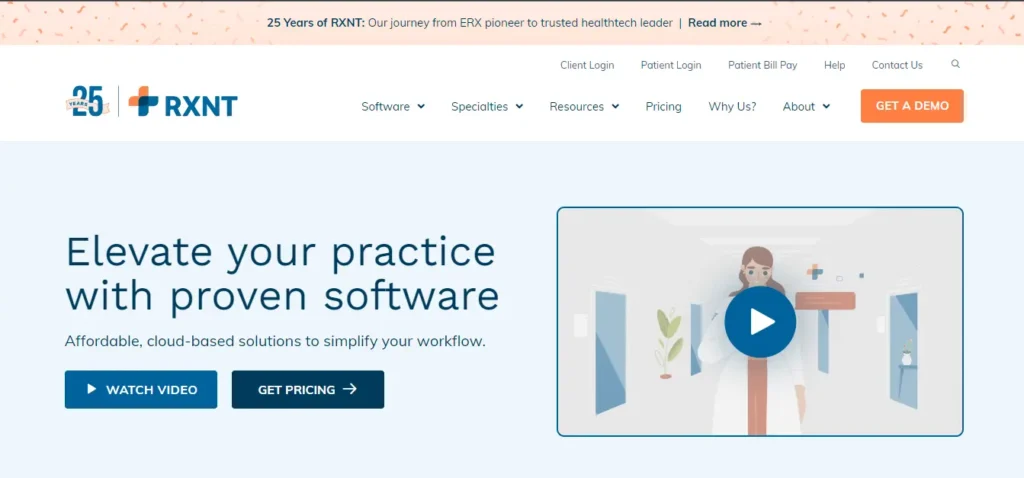
Founded on – 1999
Founded By – Randy Boldyga
Healthcare professionals and organizations can use RXNT’s software-as-a-service (SaaS) model for developing, maintaining, and selling proprietary healthcare software applications, such as electronic health records, practice management, patient scheduling, medical billing software, electronic prescribing, medical revenue cycle management, and patient portal.
FEATURES –
– Real-time prescription eligibility checks.
– Integrated with practice management and billing.
– e-Prescribe controlled substances (EPCS).
– Cloud-based, secure storage.
– User-friendly interface for medication management.
CONS
– Some users find the interface slightly outdated.
– Learning curve for new users.
BEST FOR
Small to mid-sized medical practices.
RATING & REVIEW
4.3/5
Praised for ease of use but criticized for its user interface.
PRICE
| Plan | Price |
|---|---|
| Full Suite | $298 / month per provider |
| PM Bundle | $193 / month per provider |
| EHR Bundle | $110 / month per provider |
| E-Prescribing | $665 / year per provider |
2. DrChrono
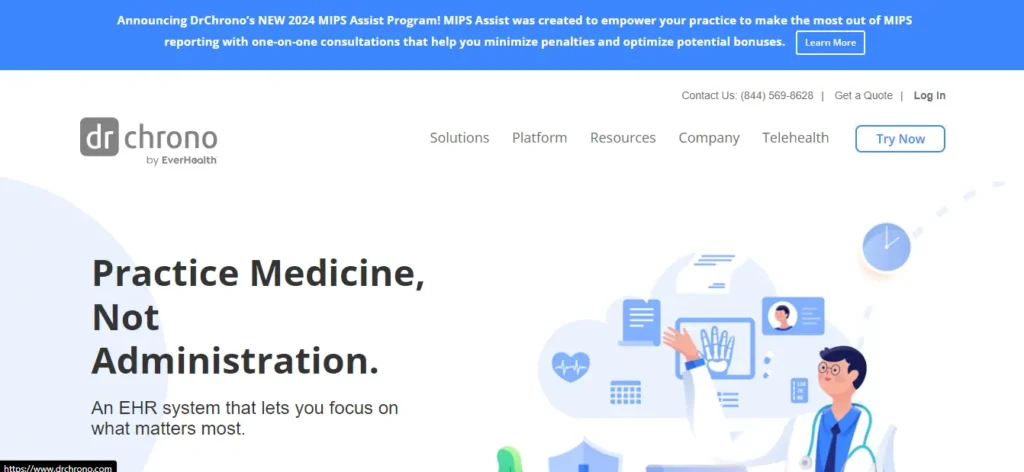
Founded in – 2009
Founded By – Michael Nusimow (CEO), Daniel Kivatinos (COO)
Built on Apple’s iOS platform, DrChrono is an electronic health record (EHR) platform that makes use of open-source technologies such as Linux, Python, MySQL, and Django. It provides developers with an API so they may make apps for patients and doctors. With configurable interfaces, doctors may keep track of visits, blood results, medications, and records. Services like billing and dictation are paid subscriptions.
FEATURES –
– EPCS certified for controlled substances.
– Mobile-friendly app for e-prescriptions.
– Integrates with telehealth and Medical billing features.
– Real-time prescription cost transparency.
– Medication history and allergy checks.
CONS
– Limited customization options.
– Customer service can be slow at times.
BEST FOR
Practices that want an all-in-one EHR with e-prescribing features.
RATING & REVIEW
4.5/5
Widely praised for its integration with iPads and mobile devices but lacks flexibility in templates.
PRICE
Custom pricing
3. Practice Fusion
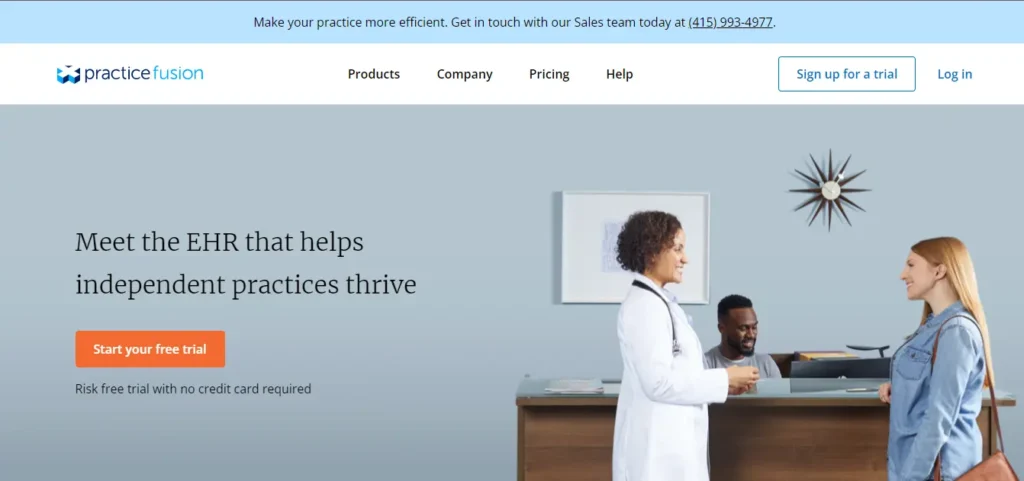
Founded on – 2009
Founded By – Ryan Howard
Electronic Health Record (EHR) software is accessible via the web for doctors and other medical professionals. Medical charting, e-prescribing, clinical decision support advisories, online scheduling and booking, online referrals, and messaging are all included in the EHR system. A network of independent laboratories, medical imaging facilities, and medical billing services are integrated with its lab, imaging, and billing modules.
FEATURES –
– Free for small practices with an easy-to-use interface.
– Real-time drug-drug interaction alerts.
– Integrated patient medication history.
– e-Prescribing for controlled and non-controlled drugs.
– Cloud-based, accessible anywhere
CONS
– Advertising can be disruptive.
– Limited support for advanced charting.
BEST FOR
Small practices looking for a free EHR with e-prescribing.
RATING & REVIEW
4.1/5
Appreciated for being budget-friendly but complaints about ads and some performance issues.
PRICE
$149 per provider per month
4. Veradigm
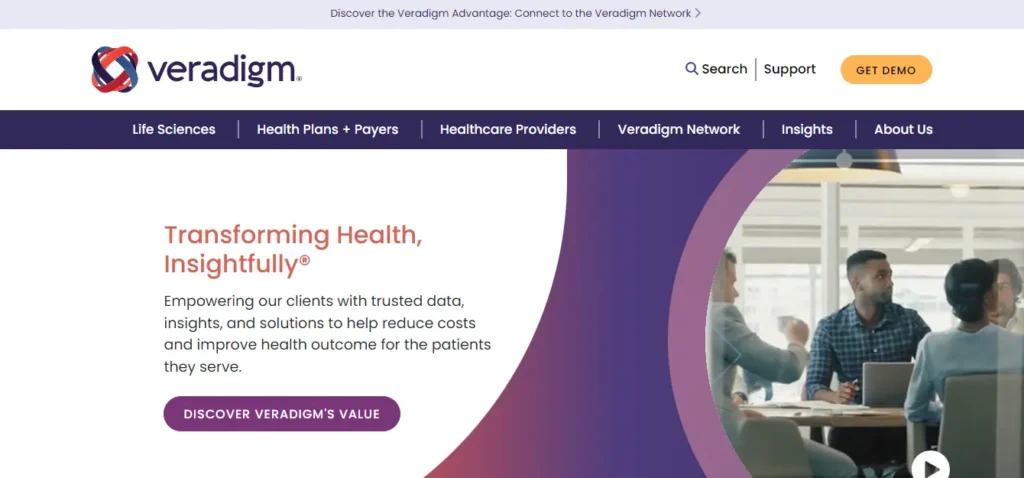
Founded in – 1982 (as Medic Computer Systems), 1986 (as Allscripts)
Founded By – Rick Poulton (CEO, 2022-2023), Paul M. Black (CEO, 2012-2022)
Revenue – $1.50 billion
Practice management and electronic health record (EHR) technology are offered by publicly listed American business Veradigm Inc. to medical practices, hospitals, and other healthcare providers. Veradigm also offers finance and analytics solutions, along with applications for patient involvement and care coordination. More than 180,000 physicians use the company’s products, which are available in 2,700 hospitals and 13,000 extended care facilities.
CONS
– Limited customization.
– The higher learning curve for new users.
BEST FOR
Large practices and healthcare networks.
RATING & REVIEW
4.2/5
Praised for its robust functionality but considered complex for smaller practices.
PRICE
Available upon request
FEATURES –
– EPCS-enabled for controlled substances.
– Integration with leading EMRs and practice management systems.
– Real-time benefits and pricing transparency.
– Advance prescription workflow.
– Data analysis support tools.
5. Epocrates
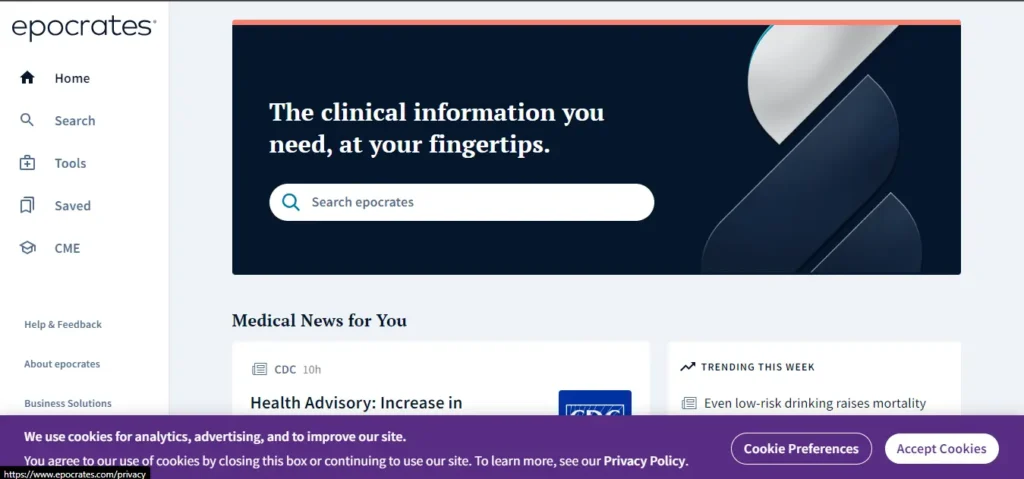
Founded on – 1 January 1998
Founded by – Palm Pilot
Revenue – $93.7 million (2009)
Healthcare workers can obtain clinical information at the time of care with the help of the popular mobile software for medical professionals, Epocrates. The software is intended to help medical professionals—physicians, pharmacists, nurse practitioners, physician assistants, and others—make well-informed judgments on medication interactions, medical computations, diagnoses, and available treatments.
FEATURES –
– Drug interaction checker and pill identifier.
– Extensive drug reference database.
– Access to medication safety information.
– Customizable alerts and guidelines.
– Mobile-friendly for on-the-go prescribing.
CONS
– Limited to medication information and interactions.
– Not a full-fledged e-prescribing solution.
BEST FOR
Providers need a quick reference tool for medications and prescriptions.
RATING & REVIEW
4.8/5
Widely regarded as one of the best apps for drug information but lacks full EHR integration.
PRICE
$16.99/month.
6. DoseSpot
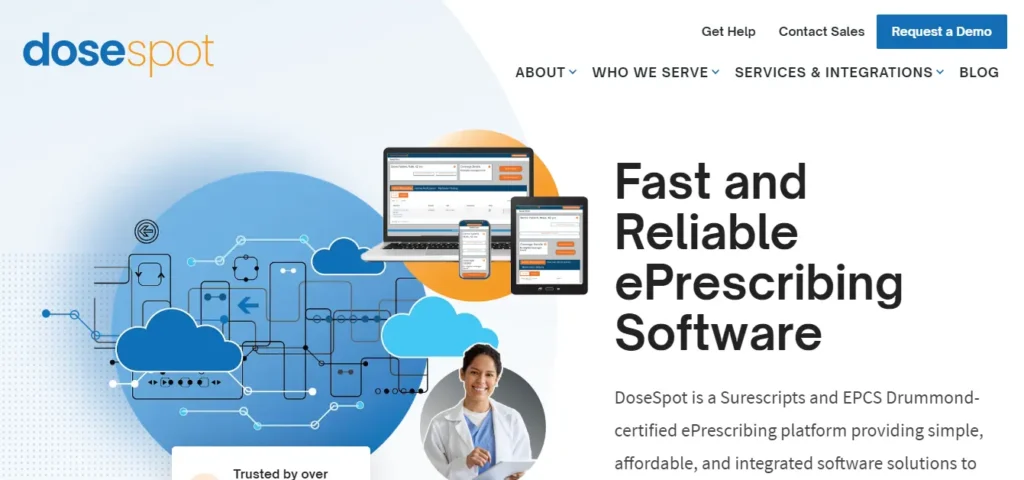
Founded on – 2009
Founded by – Andrew Needleman
Revenue – $15 million.
The business offers electronic prescribing (ePrescription) software, which enables medical professionals to electronically write and submit prescriptions to pharmacies. To lessen the administrative load of the prescription life cycle, DoseSpot’s software connects with EHRs and is approved by EPCS and Surescripts. The company’s goal is to make it simpler for customers and end users to give care to those in need at the appropriate time.
FEATURES –
– EPCS compliant for controlled substances.
– Integrated with dental and healthcare EMR software.
– Real-time prescription history and interactions.
– Seamless pharmacy communication.
– Cloud-based, secure infrastructure.
CONS
– Limited EHR features.
– Integration can be tricky with some systems.
BEST FOR
Specialty healthcare practices and telemedicine.
RATING & REVIEW
4.3/5
Appreciated for its simplicity but some users report integration difficulties.
PRICE
| No of Users | Provider A | Provider B |
|---|---|---|
| 5 | $3,995/year | $9,000/year |
| 10 | $7,990/year | $9,000/year |
| 25 | $19,975/year | $17,460/year |
| 100 | $79,900/year | $63,000/year |
7. Kareo
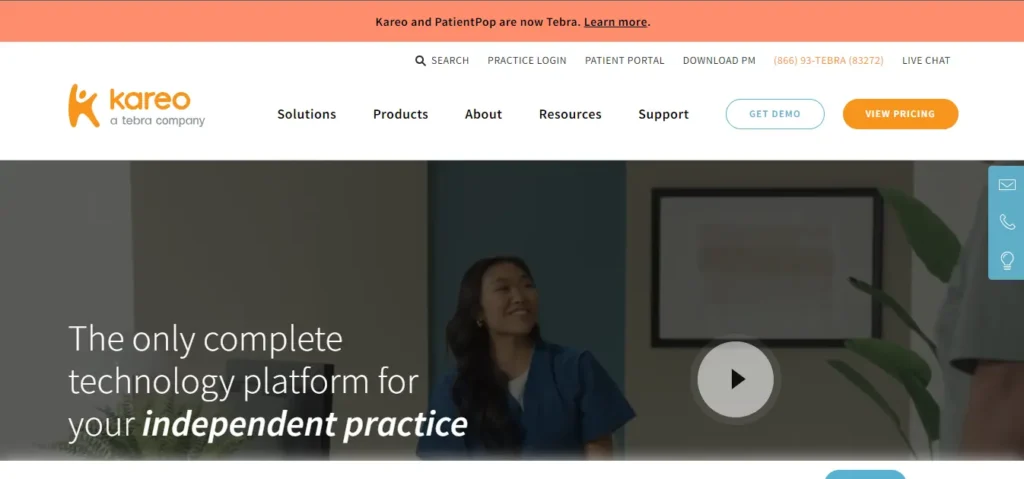
Founded on – 2004
Founded by – Dan Rodrigues
Revenue – $210.1 Million
Medical professionals can use the web-based patient management tool Kareo. Patient data, company analytics, and client billing are all included in Kareo’s software. By automating several processes, such as processing billing codes right away as a practitioner submits patient data, using Kareo simplifies billing for medical practitioners. Because Kareo bills on a per-claim basis, it is most appropriate for smaller, less busy firms.
FEATURES –
– EPCS certified for controlled substances.
– Integrated with practice management and medical billing features.
– Real-time medication history and interaction alerts.
– Simplifies prescription refills and renewals.
– User-friendly for small and independent practices.
CONS
– Customer support issues.
– Some billing and integration challenges.
BEST FOR
Independent medical practices.
RATING & REVIEW
4.4/5
Known for its user-friendly interface but struggles with customer support.
PRICE
Custom pricing
8. ScriptSure
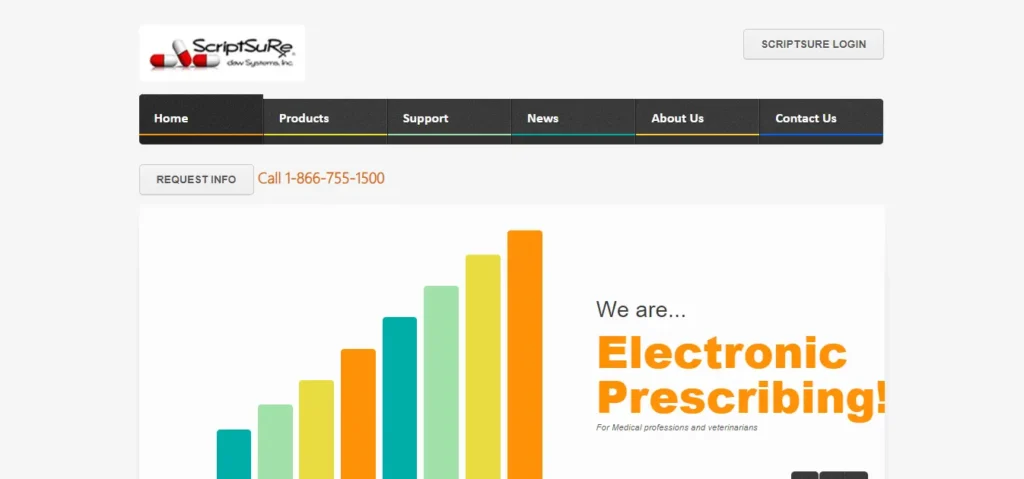
Founded in – 2001
Founded by – Dipti Gatne
The web-based platform complies with EPCS. It makes use of the SureScripts pharmacy network and the First Databank drug databases. Features include electronic prior authorization, drug history, and prescription cancellation and renewal. Prescriptions can also be printed from or faxed using the system.
ScriptSure provides desktop alternatives for Chromebooks, Windows, and Macs. There are also mobile versions available for iPad, iPhone, and Android. Most clinics’ demands may be satisfied by this approach. It might be a particularly good fit for palliative care because it also seems to be quite well-liked by home care providers.
FEATURES –
– Comprehensive drug database with allergy and interaction checks.
– EPCS for controlled substances.
– Advance prescription workflow for faster processing.
– Cloud-based access from any device.
– Supports e-prescriptions for specialty medications.
CONS
– User interface is not as intuitive.
– Limited advanced features.
BEST FOR
Solo practitioners and small clinics.
RATING & REVIEW
4.1/5
Praised for ease of use but lacks some advanced functionality.
PRICE
Custom pricing
9. iCare Billing
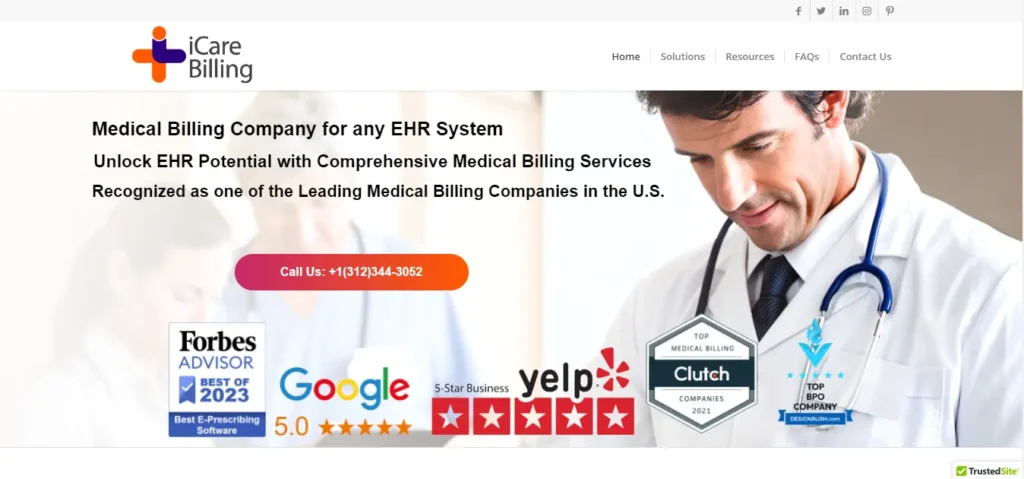
Founded on – 2001
Founded by – IK Sayyid
Revenue – $53.9 Million
iCare Billing is an iPad and iPhone-compatible cloud-based EHR that functions similarly to DrChrono. There are no alternatives for desktop or on-premise deployment. The site was created by professionals and considers those users’ needs.
With the fundamental EHR functionality that providers expect, iCare completes the task at hand. E-prescribing, appointment scheduling, and billing are all handled by the HIPAA-compliant system. It also provides scheduling, graphing, and records management; however, users won’t discover a lengthy list of supplementary features with the platform.
FEATURES –
– Integrated with practice management and billing.
– EPCS-enabled for controlled substances.
– Customizable e-prescribing templates.
– Real-time medication history and allergy alerts.
– Cloud-based for easy access and security.
CONS
– Customer support can be difficult to reach.
– Steep learning curve for non-tech-savvy users.
BEST FOR
Large practices that need both billing and e-prescribing in one platform.
RATING & REVIEW
4.2/5
Appreciated for its comprehensive nature but customer support gets mixed reviews.
PRICE
Customized pricing based on practice needs.
10. Benchmark
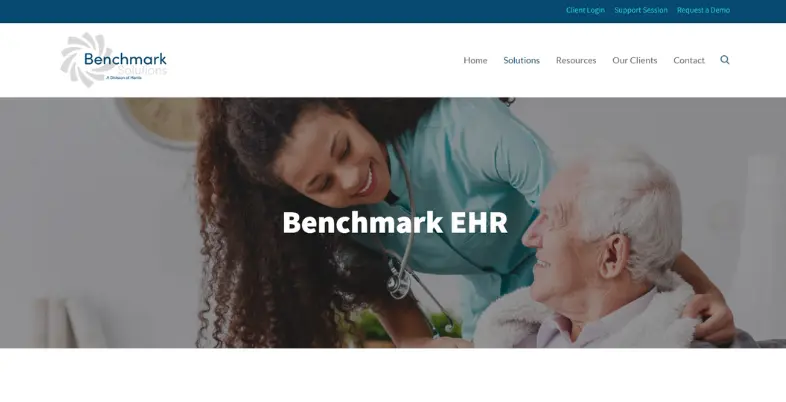
Founded in – 1995
Founded by – Bob Kagle, Bruce Dunlevie
Revenue – $2.75 billion
The Benchmark Systems platform includes e-prescribing, billing, Software for Documentation, and other essential features. The adaptable system supports more than 40 specialties and allows for the creation of unique procedures and tools to meet additional needs. However, it’s worth noting that the fundamental package does not include a patient portal, which is offered as an optional add-on.
There are several approaches to deploying a HIPAA-compliant system. With options for web, desktop, on-premise, and mobile use, enterprises may tailor the platform to best suit their requirements. Additionally, mobile choices enable caregivers to deliver excellent treatment from any location.
FEATURES –
– EPCS for controlled and non-controlled substances.
– Fully integrated with EMRs for seamless prescribing.
– Drug interaction alerts and allergy checks.
– Mobile-friendly, cloud-based access.
– Prescription renewal and refill management.
CONS
– Some users report slow performance.
– Limited third-party integrations.
BEST FOR
Growing practices need a scalable solution.
RATING & REVIEW
4.0/5
Recognized for its strong customer support service and scalability, but reports of performance issues.
PRICE
$350 per month.
CONCLUSION
In conclusion, e-prescribing software is a game-changer in modern healthcare, improving the prescription process and reducing errors. It improves the accuracy and safety of medication management and enhances the overall patient experience with faster, more efficient service.
With many options available, choosing the right e-prescribing software depends on the specific needs of your practice, from integration with existing systems to ease of use and regulatory compliance. Ultimately, the best solution will empower healthcare providers to deliver better, safer care while simplifying their daily workflow.
FAQ’S
1. What is e-prescribing software?
E-prescribing software allows healthcare providers to send prescriptions electronically to pharmacies. It replaces handwritten or faxed prescriptions, making the process faster, more accurate, and more secure.
2. How does e-prescribing improve patient safety?
E-prescribing reduces the risk of errors caused by illegible handwriting, miscommunication, and wrong dosages. It often includes built-in safety checks, such as drug interactions and allergy alerts, enhancing patient safety.
3. Is e-prescribing software mandatory?
In many regions, e-prescribing has become mandatory for certain medications, especially controlled substances, to combat prescription fraud and abuse. However, specific laws vary by location.
4. What are the key benefits of using e-prescribing software?
Some major benefits include improved prescription accuracy, faster medication dispensing, reduced pharmacy callbacks, enhanced medication tracking, and better patient treatment adherence.
5. Can e-prescribing software be integrated with EHR systems?
Yes, most e-prescribing software can be integrated with electronic health record (EHR) systems. This integration allows seamless sharing of patient data, making the prescription process more efficient and reducing the risk of errors.
6. How does e-prescribing software help with medication adherence?
E-prescribing software can send automatic reminders to patients about their medication refills and dosage schedules. It also allows doctors to track whether patients have picked up their prescriptions, improving overall medication adherence.


